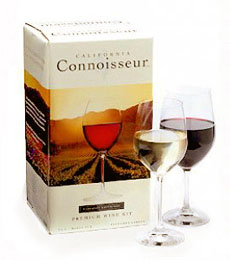 I am making a Cab Sauvignon from the California Connoisseur wine kit. I also plan on making a Merlot next and would like to blend some of the two wines before bottling. I would like to save half of the Cab in a 3 gal carboy and bottle the other half. However, at what step in the process is it best to store the bulk Cab while I am making the Merlot? After Stabilization and Clarification?
I am making a Cab Sauvignon from the California Connoisseur wine kit. I also plan on making a Merlot next and would like to blend some of the two wines before bottling. I would like to save half of the Cab in a 3 gal carboy and bottle the other half. However, at what step in the process is it best to store the bulk Cab while I am making the Merlot? After Stabilization and Clarification?
Name: Darryl M.
State: Montana
Hello Darryl,
I’m so glad to get a question on blending wines. This is something I always love to talk about. It’s also something that I feel is greatly underutilized in home winemaking. Thanks for the great question.
You want to get the wine to the point of being ready to bottling before putting it in a carboy to be bulk aged. You want to get all the steps in the provided winemaking directions out of the way before leaving the wine to rest. That means making sure the wine is clear. I would also suggest that you add a dose of potassium metabisulfite to any wine that is going to go through a bulk aging of any kind.
One thing I would like to point out is that the Cabernet Sauvignon you made is not 100% Cabernet Sauvignon grape. Smaller amounts of other grapes are blended in as well, probably some Merlot grape. We don’t exactly, because the producer of this brand does not provide this information. The same will be true for the Merlot. This is no different than the Cabs and Merlots you buy commercially at the store. They have small amounts of other grapes blended with them to round out the character of the wine.
Because of this and because all small-batch wines tend to come out slightly different each time you make them, It is impossible to know ahead of time just how much of each wine you will want to use in a blending. Something like 3 gallons of one and 3 gallons of the other seems clear-cut and simple, but it may not be the optimal blend or ratio for your two wines. In fact, you may be making a wine that taste worse than each of the wines used to produce it. It is possible. With that being said, don’t assume a particular plan of action without basing it on some type of test-tasting first.
If I were in your shoes I would bulk age the entire 6 gallons of Cabernet Sauvignon. Once the Merlot wine is ready, then I would do blind taste-testings with an array of different blends/ratios of the two wines, by the glass. Have one person blend and the others taste without knowing what’s in each glass. Whatever blend is the most like is the blend you apply to the rest of the batches. Go through this step and you’ll be blending wine like a pro.
As a side note, this makes a great party event. Invite your friends and have them help determine the blend to use with blind tastings.
If you do not want to commit the entire 6 gallons, that’s okay. I understand. It’s hard to have 6 gallons of wine sitting around when you could be drinking on it, but to get the most ‘bang’ out of your blending efforts, this is how I would proceed.
There’s a great article on our website on blending wines that I would urge you to check out, Blending To Improve Homemade Wines. It goes into both the art and science of blending wine in much greater detail than I can go into here.
Hope this helps you out.
Happy Winemaking,
Ed Kraus
———————————————————————————————————
Ed Kraus is a 3rd generation home brewer/winemaker and has been an owner of E. C. Kraus since 1999. He has been helping individuals make better wine and beer for over 25 years.
________________________________________________________
Read More About Blending Wines And Other Winemaking Topics,
FREE EMAIL NEWSLETTER:


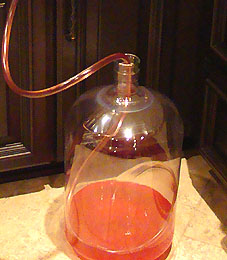 I will be bottling my first batch in the next week or so. Planning it out, I would find it much easier to dispense the wine via the spout on the large fermentation container. However the wine is finishing up its process in the 6 gal carboy. The question is, is it safe to move the wine from the carboy to the fermentation container at the moment I am ready to bottle? I would certainly be sure I minimize oxygenation and everything would be sterile. Thanks for your reply.
I will be bottling my first batch in the next week or so. Planning it out, I would find it much easier to dispense the wine via the spout on the large fermentation container. However the wine is finishing up its process in the 6 gal carboy. The question is, is it safe to move the wine from the carboy to the fermentation container at the moment I am ready to bottle? I would certainly be sure I minimize oxygenation and everything would be sterile. Thanks for your reply.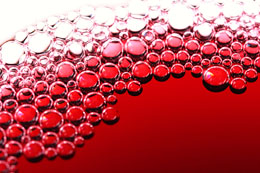 I think I’m obtaining an off-taste with my Muscadine wine because it needs additional degassing. I degas the wine once after the 7 day initial fermentation. Can I also degas again after 30 days and right before the first rack? I understand that the degassing technique may place unwanted oxygen into the wine…..what do you recommend? Thanks
I think I’m obtaining an off-taste with my Muscadine wine because it needs additional degassing. I degas the wine once after the 7 day initial fermentation. Can I also degas again after 30 days and right before the first rack? I understand that the degassing technique may place unwanted oxygen into the wine…..what do you recommend? Thanks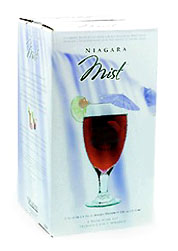
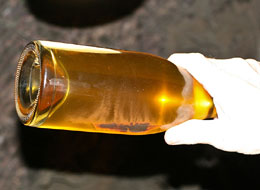 I bottled a batch of strawberry wine which had cleared up perfectly, but then within a couple months, small light colored particles appeared in the bottles. If the bottle is shaken, some of the particles dissolve, but after an hour or two they reappear. The wine tastes great, but with the floating particles, it’s difficult to share it with others. What could the problem be? I have another 6 gallon carboy to bottle in a month, and I hope I can prevent this from happening again. Thanks for your help!
I bottled a batch of strawberry wine which had cleared up perfectly, but then within a couple months, small light colored particles appeared in the bottles. If the bottle is shaken, some of the particles dissolve, but after an hour or two they reappear. The wine tastes great, but with the floating particles, it’s difficult to share it with others. What could the problem be? I have another 6 gallon carboy to bottle in a month, and I hope I can prevent this from happening again. Thanks for your help!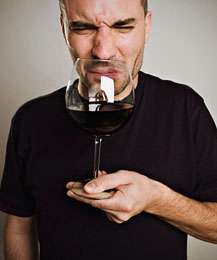 I took the stopper out of the carboy briefly to clean. I noticed a vinegar smell! Is the 6 gallons of wine junk? Or should I sample to confirm? Help! Air lock may have gotten low !!!!!
I took the stopper out of the carboy briefly to clean. I noticed a vinegar smell! Is the 6 gallons of wine junk? Or should I sample to confirm? Help! Air lock may have gotten low !!!!!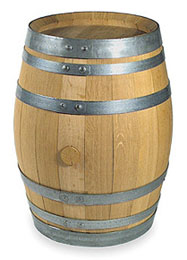
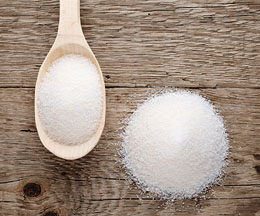
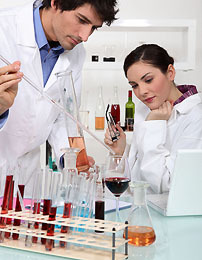 I am making a red wine. I am trying to get the right level of acid. I used a
I am making a red wine. I am trying to get the right level of acid. I used a 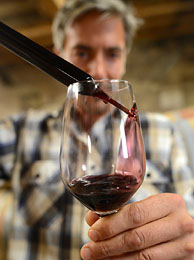 I started a fermentation with 10 lbs. of cleaned orange fruit, 6.5 lbs. of sugar, 3 gallons of water, yeast, pectic enzyme etc. I forgot to take the original specific gravity. If I remember correctly when I racked the first time my reading was 1.030. I just racked it a second time and am getting the reading of .990. Any way to accurately figure out the alcohol content or not? I’ll know better next time. Smells like its got a kick to it.
I started a fermentation with 10 lbs. of cleaned orange fruit, 6.5 lbs. of sugar, 3 gallons of water, yeast, pectic enzyme etc. I forgot to take the original specific gravity. If I remember correctly when I racked the first time my reading was 1.030. I just racked it a second time and am getting the reading of .990. Any way to accurately figure out the alcohol content or not? I’ll know better next time. Smells like its got a kick to it.